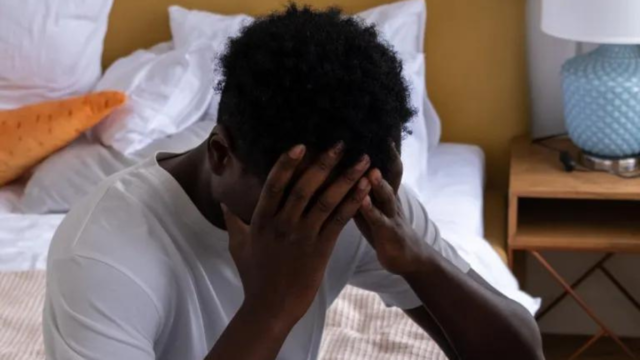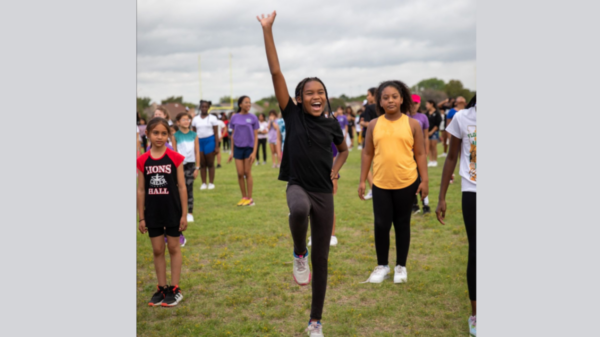
What stressed you out when you were growing up? For most of us, thoughts of climate change, a school shooting, a global pandemic, or having to get enough likes on social media were likely nowhere on our radar. For this generation of youth, however, they are facing many of the same challenges we did while navigating unprecedented upheavals of their school and social lives.
Last year the American Academy of Pediatrics (AAP) led a coalition of organizations in calling on healthcare providers, systems and leaders to treat youth mental health as a national emergency. U.S. Surgeon General Vivek Murthy has also recognized this growing threat to our children’s health, last year issuing an advisory from his office focused on “Protecting Youth Mental Health.”
In response, this year we have seen the AAP and the United States Preventive Services Task Force (USPSTF), a panel of national experts that guides primary care doctors, put forward recommendations for pediatricians and others taking care of children to start universal screening for mental health concerns.
The USPSTF last month recommended that all primary care doctors screen children aged eight and up for anxiety and those ages 12 and up for depression and suicide. They cited data from the 2018-2019 National Survey of Children’s Health that found that 7.8% of children and adolescents aged three to 17 years had a current anxiety disorder. Also, 2019 data from the National Center for Health Statistics shows that suicide was the second-leading cause of death among youth aged 10 to 19 years.
For our Black children, data tells us that they have lower rates of attempting suicide, but factors like feeling less connected at school, experiencing racism, or losing a parent or caregiver to COVID-19 are contributing to increasing numbers of our children dying by suicide. Black children are now nearly twice as likely to die by suicide than White children.
The stresses of racism, lack of connection, community violence, or having to navigate periods of food or housing insecurity all have been shown to contribute to not only poor mental health but interfere with day-to-day functioning, resulting in difficulty concentrating, remembering tasks, or making healthy or safe decisions.
This has long-term impacts with untreated anxiety and depression in childhood and adolescence, increasing the likelihood of a future anxiety disorder or depression as they become adults. So what can parents and family members look for?
Signs of trouble
For younger kids, those elementary school-aged, anxiety can take many forms. Commonly children will have excessive worries about changes in their daily routines, (like who picks them up or drops them off from school), separation anxiety from caregivers, a decreased appetite, or attempts to avoid school or other social activities by reporting nonspecific pains like head or stomach aches.
For pre-teens and adolescents, we often see kids withdraw into themselves. This looks like children who have a notable personality shift. They are no longer interested in spending time with their friends, talking to their family, or doing things they used to enjoy like playing sports.
They may sleep a lot more, have a decreased appetite, and like to spend a lot more time alone. They are often described as distant or can seem more on edge, irritable, or have sudden outbursts.
If you have concerns about a child or teen in your life, we always recommend you start by talking to them. Having a relationship with a safe, stable adult is an incredible buffer against the many stresses facing our children today. When children do share with you, try to listen first and don’t jump to solving their concerns or telling them why they shouldn’t be worried or sad.
You will also want to make sure you and your child are doing what you can to ensure they are getting good sleep, eating a healthy diet, and finding ways to be consistently physically active. Sleep and exercise in particular are closely tied to our mood.
We also know that sometimes children and teens become anxious or depressed when they are using drugs like marijuana, alcohol or nicotine. They can also be trying to treat their underlying anxiety or depression with drugs and alcohol, so it is important to not make assumptions about which came first, as sometimes it isn’t clear. What’s important is that they know you want to help them be as healthy and whole as possible.
What to do
If at any point you need help or if your child is talking about hurting themselves or others, we encourage you to talk to your child’s pediatrician. We can screen for depression, anxiety, and other behavior concerns, help families navigate these difficult conversations, and connect them to appropriate treatment, whether it be medication or therapy.
If concerns escalate before you can get in to your doctor, there are a number of supports available. Schools often have counselors you can reach out to and see if they can start therapy while in school.
If your child is in an immediate crisis, there are also hotlines you can call. I recommend starting with either the Minnesota crisis text line (text MN to 741741) or calling your local county crisis team (call **274747), both available 24 hours a day, seven days a week; as is the national suicide and crisis hotline, a network of over 200+ crisis centers that provides 24/7 service via a toll-free hotline with the number 9-8-8.
For my patients I especially highlight the county crisis teams as they often have a mobile team that can come to you. The last thing we want to do is call the police to respond to a mental health crisis.
A recent study showed that in 2021 pediatric visits to the ED for suicidal thoughts had increased 59% since 2016, with hospitalizations increasing 57% between the fall of 2019 and 2020. Clearly, our children are in the midst of challenging times we have not before experienced.
So do not be alarmed if your family doctor is now asking questions about anxiety and depression in your eight-year-old. Being aware that our children’s struggle is real, finding the time and space to listen, and if needed, connecting them to help early on can make a world of difference. It can mean they get to spend more time on this world with us.









